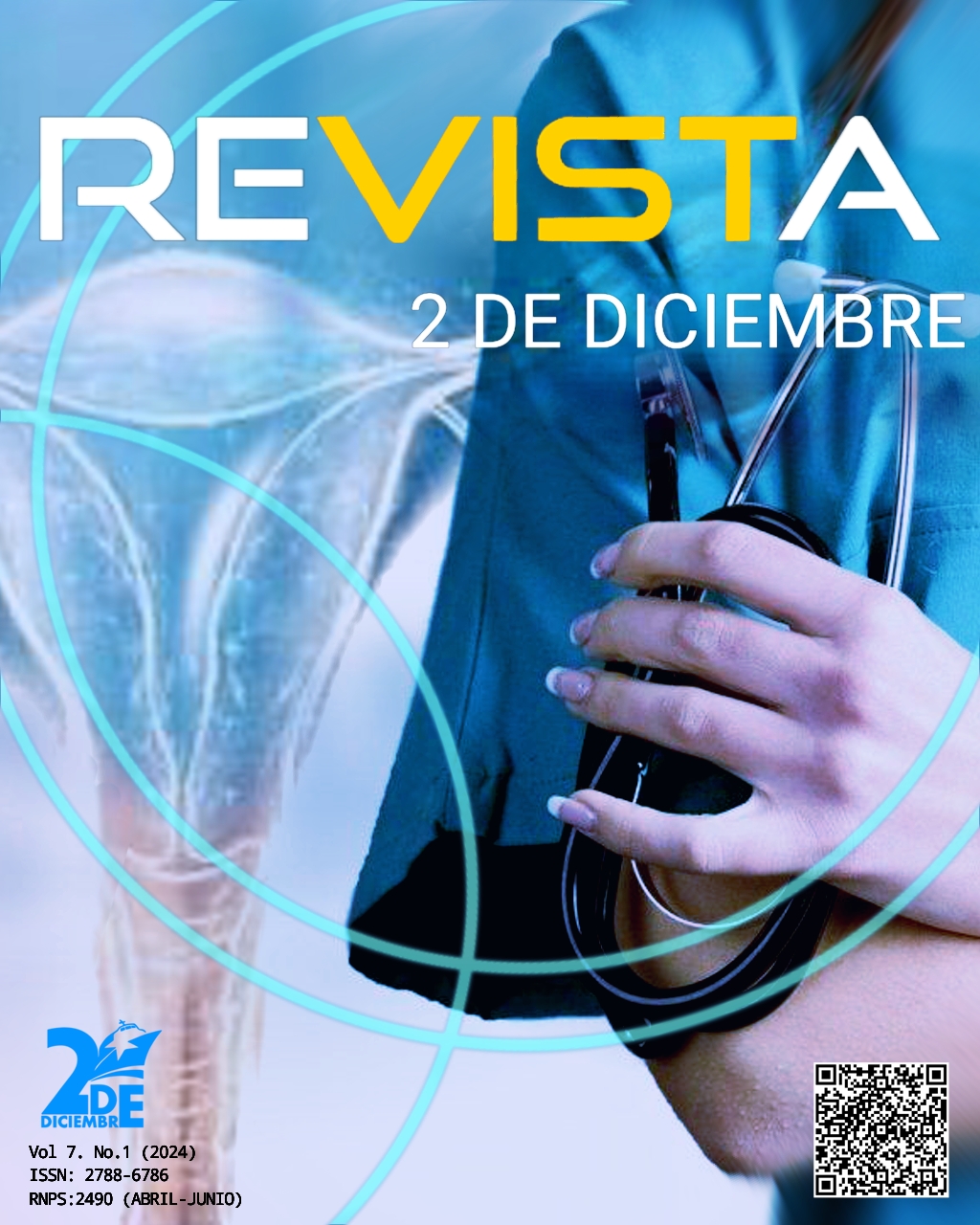Complications of conventional and laparoscopic cholecystectomy in patients with acute cholecystitis
Keywords:
Cholecystectomy, Acute cholecystitis, Complications, Laparoscopy, Postoperative, TransoperativeAbstract
Introduction: Acute cholecystitis is one of the acute abdominal conditions most frequently seen in emergency medical services. Laparoscopic cholecystectomy has been imposed over conventional cholecystectomy due to the multiple benefits it brings to the patient, however, it is not free of complications, therefore it is important to identify the behavior of these variables in our environment, as a starting point for its use in the surgical method of treatment used for this disease. Objective: to identify the complications of conventional and laparoscopic cholecystectomy in patients with Acute Cholecystitis. Methods: cross-sectional, quantitative descriptive study in patients undergoing cholecystectomy for acute cholecystitis in the General Surgery Department of the Hospital Universitario General Calixto García, between December 2019 and December 2021. Results: In both groups, the female sex predominated with 118 (61.4 %) and 94 (66.7 %) patients in groups 1 and 2, respectively. The most common intraoperative complications were bile duct injury (G1:3.6 %; G2:5.1 %), hemorrhage in the immediate postoperative period (G1:3.6 %; G2:5.4 %), late Cholangitis in the laparoscopic route (0.9 %) while in the conventional route infections of the surgical wound predominated (3.9 %). Conclusions: bile duct injuries were more common intraoperatively. In the immediate postoperative period, hemorrhage and later, Cholangitis and Surgical Wound Infection in the laparoscopic and conventional routes respectively. The effectiveness of the laparoscopic approach over the conventional approach is confirmed.
Downloads
References
1. Praderi, Raúl. Cien Años de Cirugía Biliar. Revista Chilena de Cirugía. 1982; 52: 1-18.
2. Instituto Mexicano del Seguro Social. Guía de Práctica Clínica Diagnóstico y Tratamiento de Colecistitis y Colelitiasis, México, 2019. Centro Nacional de Excelencia Tecnológica en Salud. [citado el 18 de mayo de 2023] Disponible en http://www.imss.gob.mx/profesionales/guiasclinicas/Paes/guias.aspx
3. Arpicañizares, Miguel Ángel, Asitimbay Sotamba, Mayra Verónica. Causas de conversión de la Colecistectomía Laparoscópica. Tesis Universidad de Cuenca. 2014, 25.
4. González, William, Bonilla, Guillermo, Gutiérrez Giuliana. Enfermedades de la vesícula y vías biliares. Ciencia y Salud. Vol.3,No.3 Junio-Julio 2022 [citado el 3 de diciembre de 2023] Disponible en http://doi.org/10.34192/cienciaysalud.v6i3.311
5. Armas, Bárbaro Agustín. Apuntes históricos en colecistectomía laparoscópica. Gaceta Médica Espirituana Vol 21, No.2. 2019 [citado el 3 de diciembre de 2023] Disponible en http://revgmespirituana.sld.cu/index.php/gme/article/view/1907/html
6. Ensuncho-Hoyos, César Rafael, Negrete-Spath, Carolina, Rodríguez-Padilla Libia. Factores asociados con la conversión a técnica abierta en la colecistectomía laparoscópica. Revista Colombiana de Cirugía. Vol.38 No.4. 2023 [citado el 3 de diciembre de 2023] Disponible en http://revistacirugia.org/index.php/cirugia/article/view/2305
7. Overby DW, Apelgren KN, Richardson W, Fanelli R. SAGES guidelines for the clinical application of laparoscopic biliary tract surgery. Surgical Endoscopy 2020; (10): 2368-86.
8. Yilmaz B, Roach EC, Koklu S, Aydin O, Unlu O, Kilic YA. Air leak syndrome after endoscopic retrograde cholangiopancreatography: a rare and fatal complication. World J Gastroenterol. 2018;21(15):4770 2. PubMed: PMID: 25914490.
9. Tokuhara M, Shimatani M, Mitsuyama T, Masuda M, Ito T, Miyamoto S, et al. Evaluation of complications after endoscopic retrograde cholangiopancreatography using a short type double balloon endoscope in patients with altered gastrointestinal anatomy: a single-center retrospective study of 1,576 procedures. J Gastroenterol Hepatol. 2020;35(8):1387-96. PubMed: PMID: 32103516.
10. Díaz Velásquez F. Comportamiento de la colecistectomía laparoscópica en el paciente geriátrico. Hospital Lenin 2018-2022 [Internet]. Holguín: Universidad de Ciencias Médicas Holguín. Facultad de Medicina “Mariana Grajales Cuello”; 2022 [citado 14 May 2024]. Disponible en: https://tesis.hlg.sld.cu/index.php?P=FullRecord&ID=2783&ReturnText=Search+Results&ReturnTo=index.php%3FP%3DAdvancedSearch%26Q%3DY%26FK%3DComportamiento%2Bde%2Bla%2Bcolecistectom%25C3%25ADa%2Blaparosc%25C3%25B3pica%2Ben%2Bel%2Bpaciente%2Bgeri%25C3%25A1trico.%2BHospital%2BLenin%2B2018-2022%2B%26RP%3D5%26SR%3D0%26ST%3DQuick
11. Roque González R, Alfonso M, Ángel M, Torres Peña R, López Milhet AB, Pereira Fraga JG, et al. Reintervenciones por complicaciones después de realizada colecistectomía laparoscópica. Rev Cuba Cir.2011;50(3):302–311.
12. Gurusamy K, Junnarkar S, Farouk M, Davidson BR. Meta-analysis of randomized controlled trials on the safety and effectiveness of day-case laparoscopic cholecystectomy. Br J Surg. febrero de2018;95(2):161-8.
13. Paredes S, Paul V. Factores asociados para conversion de colecistectomialaparoscopica en el departamento de cirugía, Hospital Nacional Hipolito Unanue, marzo 2015 a marzo 2016 [Internet]. 2019 [citado el 18 de mayo de 2023]. Disponible en: http://cybertesis.urp.edu.pe/handle/urp/955
14. Kimura Y, Takada T, Strasberg SM, Pitt HA, Gouma DJ, Garden OJ, et al. TG13 current terminology, etiology, and epidemiology of acute cholangitis and cholecystitis. J Hepato-Biliary-PancreatSci. enero de2018;20(1):8-23.
15.Gutiérrez, Diana, Reyes, José, Osorio, Aldo, Lara, Javier, Aguirre, Karla, Benítez, José. Prevalencia y análisis de factores de riesgo quirúrgico en clínicas de heridas. Revista Cubana de Cirugía. Vol.62 No.1. 2023 [Internet]. 2023 [citado el 5 de enero de 2024]. Disponible en: http://revcirugia.sld.cu/index.php/cir/article/view/1452
Downloads
Published
How to Cite
Issue
Section
License
Authors who have publications with this journal agree to the following terms: authors retain their copyright and grant the journal the right of first publication of their work, which is simultaneously subject to the Creative Commons Attribution-NonCommercial 4.0 International License that allows third parties to share the work as long as the author and first publication in this journal are indicated, for non-commercial use. Authors may adopt other non-exclusive license agreements for distribution of the published version of the work (e.g., depositing it in an institutional telematic archive or publishing it in a monographic volume) as long as the initial publication in this journal is indicated. Authors are allowed and encouraged to disseminate their work via the Internet (e.g., in institutional telematic archives, in their web page or in Pre-print servers) before and during the submission process, which can lead to interesting exchanges and increase citations of the published work. (See The Open Access Effect).







